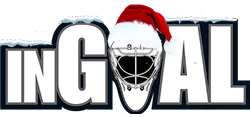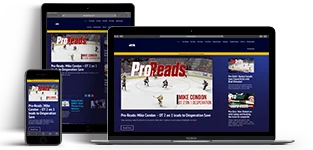Feature
Former New York Rangers goalie unlocks key to his game just in time to retire
In-season video coaching, instruction and mentorship based on proven model at Assertion Goaltending.
It’s an understandable assumption. In his first pro season, Skapski won his first two NHL starts, gave up one goal, pitched a shutout, and posted a .978 save percentage.
So, what was the big change? Was it a new technique or style? Not so much, though Skapski built the coaching philosophies he encountered in his career into his new approach, particularly the lessons from Rangers goaltending coaching legend Benoit Allaire.
No, the big breakthrough for Skapski came in a new approach to coaching, one that he believes identified – and can fill – significant gaps in current goaltending development models.
It’s also one reason Skapski, who had offers to play this season in Europe but hasn’t been 100-percent physically since hip surgery following that impressive 2014-15 rookie season and NHL debut, decided to retire now at age 25. He’s eager to put the model into action, joining up with Rangers goaltending development coach Jeff Malcolm to launch Assertion Goaltending.
“My whole career was trial and error without ever truly establishing what works for me,” said Skapski. “Even with all the great coaching I had over the years, working with guys like Benny (Allaire), I still didn’t completely understand my game and how to execute on it every day. I found what works towards the end, and now I want to make sure other goalies don’t have to wait until the end of their career to look back and figure out what really worked.”
The Key to Truly Understanding Your Game
If it seems strange to you to hear a goaltender who had spent three years in the Rangers system and had success in his brief NHL stint took four years to truly understand his own game, you’re not alone. With all the information and instruction out there, however, it can be hard to find your foundation, and properly recognize your keys to success. It can be easy to chase new ideas at the expense of what matters, and chase solutions to problems that may not even exist.
Skapski didn’t understand this himself until he started doing weekly video review sessions, first with Paul Fricker, who is the goaltending coach of the Vancouver Giants of the Western Hockey League and counts Pittsburgh Penguins backup Tristan Jarry among his full-time clients, and then with Malcolm while playing for Orlando in the ECHL during the 2017-18 season.
The key to Skapski figuring it all out – the breakthrough — was the video coaching itself.
“That’s where my breakthrough came. I wish I had it earlier,” Skapski said. “This system with video and being able to see myself and doing it weekly throughout the season really reinforced the elements that made me successful. Seeing my video, I started to believe it more, and it became a mindset where I saw myself, I felt it, I could apply it in practice, I would experience in games, and whether or not it was a good result, I would know I was building on my foundation. My results compounded quickly. I was able to completely understand my game. When I had a bad game, I was able to go back to my system and execute on a more consistent basis.”
Weekly video reviews not only reinforce the habits and technical cues goaltenders are trying to build, they can help separate that process from results when things aren’t going well. Right up to the NHL, goalies talk about being careful not to overreact to stretches where the puck starts going in more than they’d like, and using video sessions with their goaltending coaches to identify whether they should, or would, have played those goals any differently. Often, it’s just a matter of bad bounces or breakdowns around them, and video helps them understand it’s not always their fault, that overreacting and changing their game might make things worse.
The video review work became Skapski’s own personal slump buster.
“This helped me eliminate, if I had to put a number on it, I would probably say five bad games,” he said. “If I was in a slump for two games, typically before doing this, I would be confused. I wouldn’t know where to start. ‘What am I doing wrong? What am I doing right? Do I need to adjust anything?’ This type of coaching fixed that. I was able to trust what I was doing, regardless of outcome, of how your team comes to play, or if you’re off, there’s always a system to revert back to. You see yourself on video, you make adjustments, and you execute on them the next week. And it’s a system that just keeps rolling throughout the season.”
Stop Changing for the Sake of Change
Similarly, Skapski believes that regular video work can reinforce a foundation amid a lot of new ideas from the outside. He worked with a variety of high-end goaltending coaches coming up, attended Hockey Canada’s Program of Excellence as a junior, and sought out new voices and technical concepts in the summers, including attending the NET360 goalie camps one year.
“I felt like I was getting good material but couldn’t necessarily apply it on a daily basis and have an execution plan,” he said. “A lot of people are going to different guys and having an open mind, which is great, but that knowledge they’re consuming isn’t always applicable to what they’re doing, and they can’t see those firsthand results. We keep track of the progression throughout the season and make adjustments, keep the goalie accountable, and help them believe that what they’re doing every single day will lead to results. And you know what? There’s a proof of concept with myself, a few of the people that I’m working with, and it’s really showing quick results when you work at the same things every single day.”
Those technical, mechanical and teaching principles are based on the shared experiences of Skapski and Malcolm as goaltenders, as well as the shared (and proprietary, statistically-proven) philosophies of Allaire and the Rangers. They are reinforced not only in weekly video reviews with each client, but by watching footage of other professional goalies and continuously identifying when they execute those philosophies properly and when they don’t. It doesn’t take long for young goaltenders to figure out what happens when they do (saves) and don’t (goals), which makes it easy to create buy in, and that “proof of concept” Skapski talks about.
“We’ve established core values we find very important to the position and establish those with the goalie, but the biggest gain is the athlete seeing himself or herself on video and combining that with seeing video of goalies doing it in the NHL,” he said. “It’s a wide range of goalies doing it in the NHL, the things that we’re preaching, and seeing it over and over is powerful.”
Creating Intentional Practice
The weekly video sessions typically start with Skapski and Malcolm breaking down film from a young goaltender’s game over the weekend, and preparing a series of clips for them to review together with a phone call and screen-sharing video session on Monday or Tuesday.
“We watch it together and we both create a simple execution plan with a few key points that we need to bring intention to for that week of practice,” Skapski said. “We then follow up with the goalies at the end of the week leading into their next games to ask him how the week went, soundboard thoughts that are currently arising before the games, like nerves for example, and other things that have gone on throughout the week, just kind of put those on the back burner and build it into the weekend games. This process re-occurs throughout the season.”
The goal is not only to re-inforce the positives and agree on any necessary changes from the past games, but to come up with some focal points they can work in in practice, which as most goalies and goalie parents know, often lack position-specific focus during the season.
“We create an execution plan, create intention in practice, so you’re not just out there to get in way. I remember a lot of practices as a pro where I had no plan, I was just out there.”
The results with early adopters this season have been telling, adding to that “proof of concept” Skapski felt himself late in his pro career. One new client was picked high in the WHL Bantam draft two years ago, but had such a disappointing next season he was actually de-listed by the team, making him a free agent. He started working with Skapski and the new video program in August, and four months later already has teams in the WHL trying to sign him again.
“He’s seen some insane results very quickly,” Skapski said. “He came from a dark place and we built a belief back into him and he feels that and he’s having fun playing hockey again.”
Playing with a Free Mind
If this all sounds like having access to a professional, NHL-style goaltending coach during the season, Skapski believes that based on his own experiences it might be even better. That’s because his young goaltenders can be open and honest with him about how they are feeling without fear of being judged (or ratted out) by a coach with primary loyalties to the team.
Skapski said video review is common once you get to pro, but he went into those sessions and ended up focusing almost exclusively on all the things he did wrong, or needed to fix, without ever talking about how he felt that week or in a certain game or in situation on the ice.
“You didn’t want to show any sign of weakness,” said Skapski.
Doing the sessions with an independent coach allowed him to free himself of any mental burdens, and talk through things, so when it was time to watch video, he was locked in.
“When I looked outside the organization for that help, I felt like I could really open up mentally, talk about what was bothering me, what was really working for me, and that was the first step into actually being able to identify my video because I had a clear mind and I was ready to learn,” Skapski said. “So, there’s a component of intention that’s involved, there’s a component of mechanics that’s involved, and then there’s a component of sound boarding off of a neutral source that is interested in in your well-being as a goalie. Anything that arises. If you’re frustrated with teammates if you’re frustrated with how the season is going or a certain game, it’s somebody to talk to, before you go into video and start getting to work and seeing yourself, and from that point, you create an execution plan based on the video with a clear mindset.”
Been There, Done That Advice
In addition to the mental training and “sounding board” aspect built into the video work, Assertion Goaltending’s new platform extends to career advice.
Between Skapski and Malcolm, there aren’t many situations in minor, junior, college and professional hockey that they haven’t experienced firsthand. Skapski went from minor hockey to the WHL, to professional hockey and the NHL at 20. Malcolm played Jr. A in the BCHL before moving onto the NCAA, playing four years at Yale University and backstopping the school to its first National Championship, including a 36-save shutout in the title game, in 2013. He turned pro the following year, and split four seasons between the AHL and ECHL before retiring after the 2016-17 season and joining the New York Rangers in a development role in 2018.
“I’m fortunate to be with Jeff. He went the NCAA route, played in the BC Hockey League and understands that grind on a day-to-day schedule. He understands the pressures, the ups and downs, the travel schedule, the emotional swings,” Skapski said. “And I know the Western Hockey League route, the exact same things, but different animal. Jumping to pro at 20 years old. He’s jumping to pro at 25 or 26. He’s under an American Hockey League contract battling it out. I’m under a National Hockey League contract battling. We’ve each played in the American League, the East Coast Hockey League. A lot the day-to-day grind we can relate to with athletes and have them trust us, because we’ve been through that exact same process.”
Comments
Let's talk goaltending!
We welcome your contribution to the comments on this and all articles at InGoal. We ask that you keep it positive and appropriate for all - this is a community of goaltenders and we're here for each other! See our comment policy for more information.




